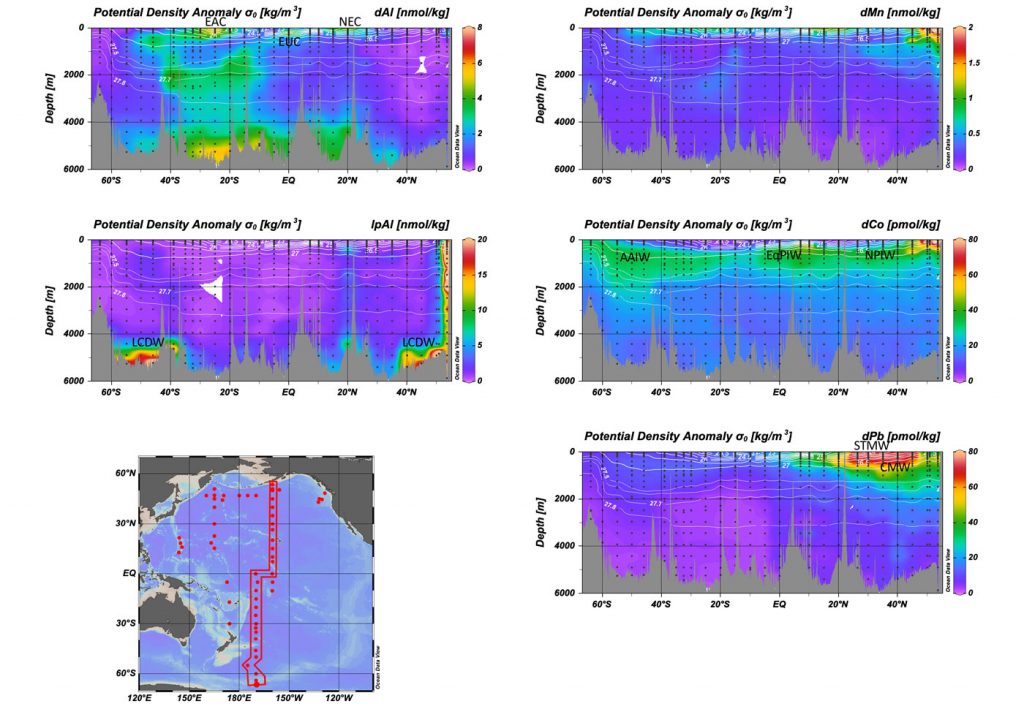Different fates of four poorly soluble trace elements in the Pacific Ocean
After having demonstrated that aluminum (Al), lead (Pb), manganese (Mn) and cobalt (Co) are uniquely related to ocean circulation in the North Pacific (Zheng et al., 2019), Zheng and co-authors (2022, see reference below) present the full-depth distributions of these elements in the western South Pacific, which include meridional sections along 170°W (GEOTRACES section GP19). In this study, they performed a detailed description of the physical speciation of these tracers: dissolved (d) and total dissolvable (td) concentrations were measured allowing them to calculate labile particulate (lp). This allowed them to establish the first order processes that drive the biogeochemistry of Al, Mn, Co, and Pb in the Pacific Ocean. Among others:
- Dissolved Al, dMn, dCo, and dPb are distributed differently in the Pacific Ocean due to different major sources and different biogeochemical cycling. They suspect that a tight connection between the weathering on land and the distribution of dAl in the Pacific Ocean. In contrast, strong sources of dMn, dCo, and dPb occur in the North Pacific. The major source of dMn and dCo is continental shelf sediments, and the major source of dPb is anthropogenic aerosols.
- Mn/PO4 and dCo/PO4 ratios in the surface mixed layer indicate that dCo is deficient for phytoplankton in a large area of the Pacific, although dMn is deficient only around the equator and to the south of the STF. Dissolved Pb is highly concentrated in the North Pacific, indicating that anthropogenic pollution still dominates the oceanic distribution of dPb in this area.

References:
Zheng, L., Minami, T., Takano, S., & Sohrin, Y. (2022). Distributions of aluminum, manganese, cobalt, and lead in the western South Pacific: Interplay between the South and North Pacific. Geochimica et Cosmochimica Acta, 338, 105–120. doi:10.1016/j.gca.2022.10.022
Zheng, L., Minami, T., Konagaya, W., Chan, C.-Y., Tsujisaka, M., Takano, S., Norisuye, K., & Sohrin, Y. (2019). Distinct basin-scale-distributions of aluminum, manganese, cobalt, and lead in the North Pacific Ocean. Geochimica et Cosmochimica Acta, 254, 102–121. doi:10.1016/j.gca.2019.03.038
